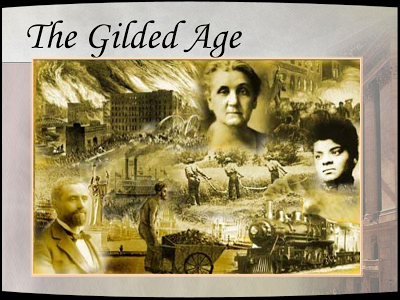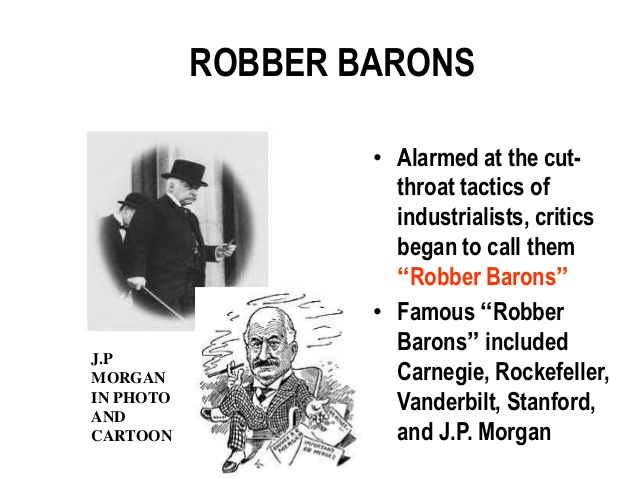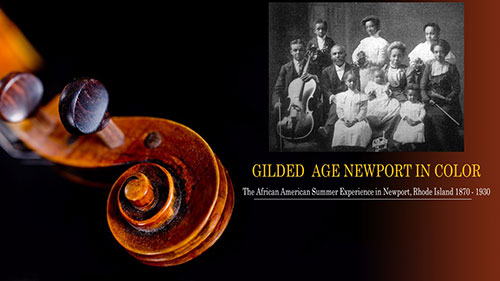

Let’s talk about The Gilded Age!

The Gilded Age in United States history is the late 19th century, from the 1870s to about 1900. The term for this period came into use in the 1920s and 1930s and was derived from writer Mark Twain‘s 1873 novel The Gilded Age: A Tale of Today, which satirized an era of serious social problems masked by a thin gold gilding. It began as the Reconstruction Era ended in 1877, and it was followed by the Progressive Era that began in the 1890s.
The Gilded Age was an era of rapid economic growth, especially in the North and West. As American wages were much higher than those in Europe, especially for skilled workers, the period saw an influx of millions of European immigrants. The rapid expansion of industrialization led to real wage growth of 60% between 1860 and 1890, spread across the ever-increasing labor force. The average annual wage per industrial worker (including men, women and children) rose from $380 in 1880 to $564 in 1890, a gain of 48%. However, the Gilded Age was also an era of abject poverty and inequality as millions of immigrants—many from impoverished European nations—poured into the United States, and the high concentration of wealth became more visible and contentious.

Railroads were the major growth industry, with the factory system, mining, and finance increasing in importance. Immigration from Europe and the eastern states led to the rapid growth of the West, based on farming, ranching and mining. Labor unions became important in the very rapidly growing industrial cities. Two major nationwide depressions—the Panic of 1873 and the Panic of 1893—interrupted growth and caused social and political upheavals. The South after the Civil War remained economically devastated; its economy became increasingly tied to cotton and tobacco production, which suffered from low prices. With the end of the Reconstruction era in 1877, African-American people in the South were stripped of political power and voting rights and were left economically disadvantaged.

The Gilded Age can still be characterized as the prelude to our own time. Patterns of tension that persist to the present—black and white, capital and labor, science and religion, republic and empire, public good and private gain—can be traced to the era of corsets and spats.
The story of Gilded Age Newport, Rhode Island is anchored by the economic, social and civic achievements of many of America’s wealthiest individuals and families, most notably the Vanderbilt, Astor, Belmont, Oelrich and Berwinds. These family names have come to represent that important period of economic and cultural growth in America.
Few would know that Newport during the Gilded Age summers would also be host to many important African American political, business, civic, and artistic leaders. Men, women and families of color would travel to Newport from Boston, New York, Philadelphia and Washington to take part in a rare opportunity for persons of color during late 19th and early 20th century America for uninhibited social and cultural interchange.
Gilded Age Newport also provided seasonal and expanded employment opportunities for African heritage men and women, many of whom were a part of the recent great migration of southern families to northern urban centers during the early 20th century. These vital jobs would provide the catalyst for many families of color in their advancement into working and middle class status.

Say the phrase “Gilded Age” and an image immediately springs to mind: mansions like Rosecliff, The Elms, and The Breakers, visions of a bygone era of spectacular opulence when Newport was the trendy summer playground for the Vanderbilts and other obscenely wealthy American families.
Wealthy, white American families that is.
However, one character in Lord Julian Fellowes’ HBO series “The Gilded Age,” which is set primarily in New York City but filmed primarily in Newport, offers a glimpse at a largely untold story of the era: Peggy Scott. In the show, Scott and her parents – a pharmacist and a trained pianist– live in a beautiful brownstone staffed with servants in a thriving African American neighborhood replete with social clubs, opulent celebrations and flourishing businesses.
Peggy Scott might not be a real historical figure, but the setting and details of her fictional life are drawn directly from the lived experience of African heritage communities in the United States, including Newport. As local historian and business leader Keith Stokes put it in the Twitter announcement of his upcoming Feb. 17 lecture on the Gilded Age experience of Newport’s African heritage communities, “we were always here.”

Keith Stokes’ aunt and uncles as children at Easton Beach in 1913.
Stokes, who serves on the boards of numerous prominent local organizations, traces his family lineage back through the history of Newport for 11 generations; his ancestor Rev. Mahlon Van Horne was the pastor at the historic Union Congregational Church and became the first person of color to be elected to the Rhode Island General Assembly in 1885.
This week we will take a look at African Americans during the Gilded Age and the impact on today.
